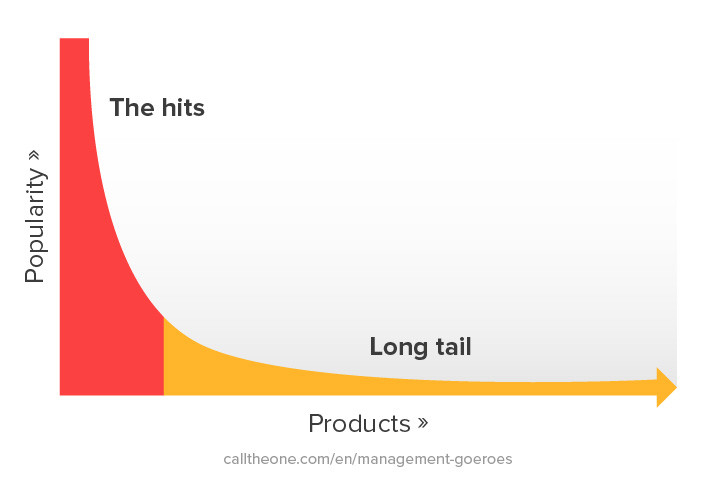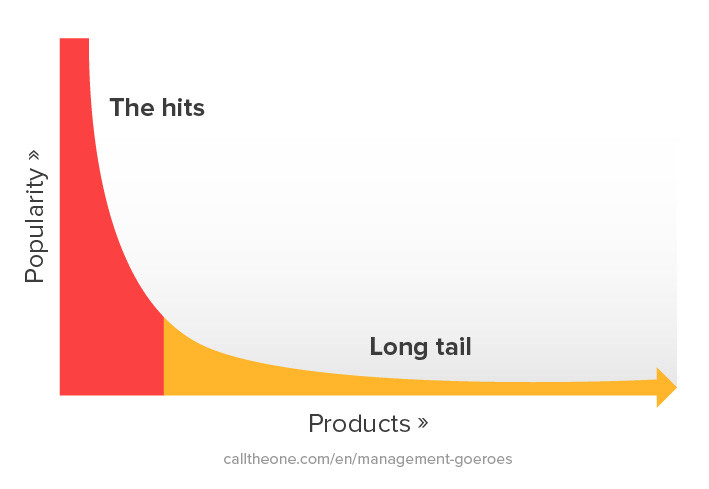
One question that is for sure on the minds of CEOs, strategists, analysts and maybe comes up on everyone’s mind every so often, is what is the future of business? The longer you think about it, the more models come up in your head that would describe modern-day business models. These models are relatively new and there is no certainty that they will be successful in the future. One of those models, the long tail strategy, is one you see in all large-scale businesses nowadays. For example, Amazon will recommend you a book about mountain climbing that was published in 1988 (Touching the Void by Joe Simpson), just because it is similar to a book that’s trending right now (Into Thin Air by Jon Krakauer). This results in an increase in sales of Simpson’s book (Wired, 2004).
The mountain climbing book example shows the value of the long tail. Amazon can provide you with something that typical customers wouldn’t even get close to searching for, thus offering niche markets that still provide value. More companies embrace this strategy, Amazon is simply used as an example. Think about Netflix and Google, what if you had a weird knob on the very edge of your 4th little toe, the first thing you might do is ask your parents or lover to take a look at it, they have no clue what it might be. Going to the doctor for it might be not an option for you (shameful), so you Google it. And guess what, Google interprets your Google search and tries to find the most useful sites for you, resulting in an effective click rate that further leads you to ads.
The practicalities of the long tail are increasing, but where lies the end of an exponential curve, is it infinity or are we going to hit a wall in the future?
Reference: https://www.wired.com/2004/10/tail/
https://www.calltheone.com/en/consultants/the-long-tail-chris-anderson-explanation-examples


Great post Roy! Let me try to answer your question on how long the tail can get. Although there are many opportunities in offering a wide variety of products as you described, companies shouldn’t forget about the drawbacks. The longer the tail gets the flatter it will be as well. At one point the demand for a product will be too small to justify the costs associated with it. So, in my opinion, the tail ends at a point where the costs outweigh the revenue and benefits generated. For companies such as Amazon or Zalando, the end of the tail will be pushed a little bit more to the right as they follow a platform strategy. It allows them to offer a big variety of products at very small costs since they don’t have to own and warehouse the products themselves. And for companies offering information goods the end of the tail will most likely be even further to the right as storage of those goods is almost unlimited. But information goods still need to be produced and costs of development are typically not negligible. After all, each company has to carefully evaluate its product offering to find the balance between the value and costs its long-tail assortment generates.